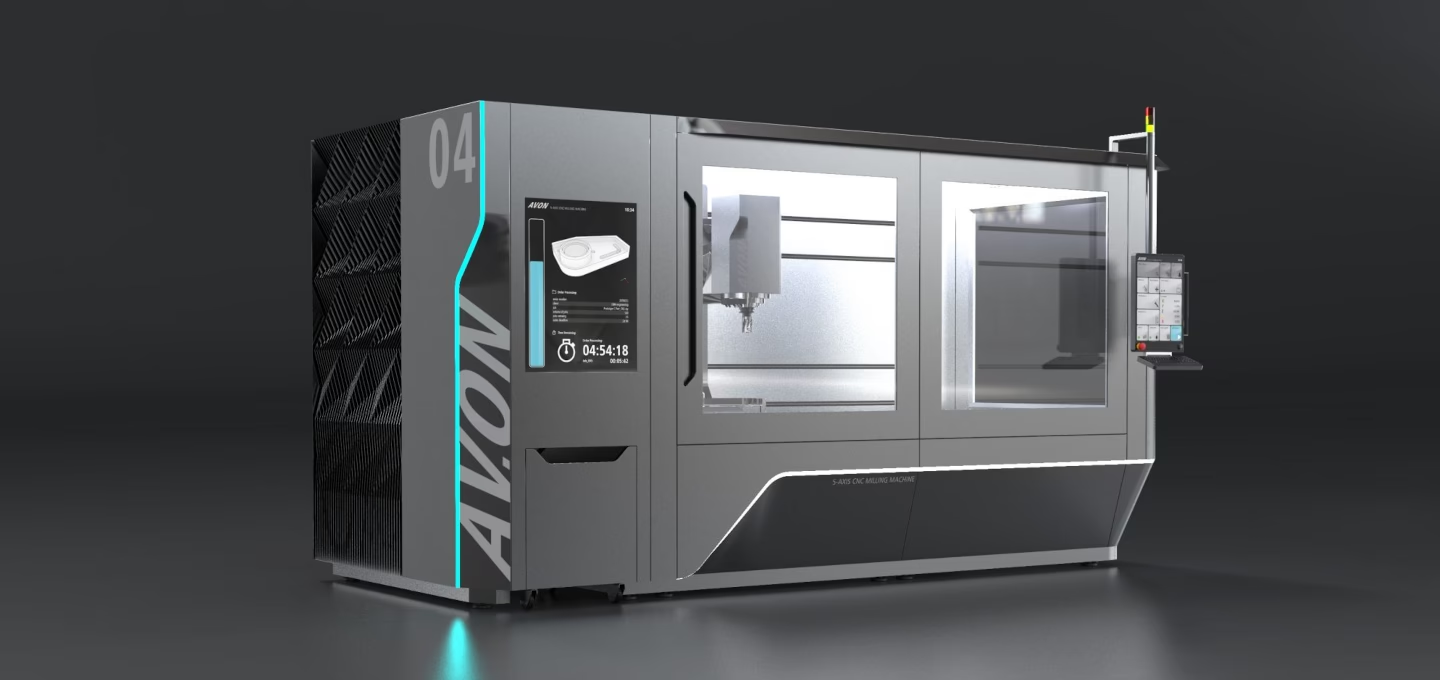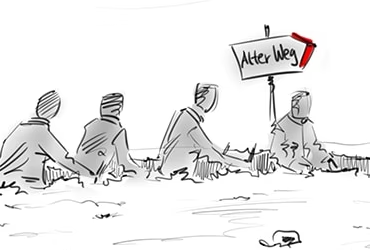Unlocking Potential with Production-Optimized Industrial Design
Dispelling the Myths
The most frequently cited reason companies give for not utilizing design as a service is: "Too expensive!"
A common misconception is that design entails cost-intensive manufacturing processes. Particularly in the B2B sector, the added value offered by compelling design is underestimated. Yet production-optimized design demonstrates that added value and cost efficiency are not contradictory, quite the opposite.
Why Companies Forgo Professional Design
Economic success factors such as price or product quality are easily comparable in competitive markets. An advantage arises when companies manage to stand out in the existing market and convince customers.
The Fear of High Investments
Many companies fear that professional design involves expensive production modifications. New machinery, unfamiliar manufacturing processes, high tooling costs – these associations are deterrents. However, production-optimized design takes a different approach.
The Underestimated Added Value in B2B
Especially in the capital goods sector, performance promises and value communication play a crucial role. Your products are your company's business card. Technical competence, innovative progress, and good ergonomics are factors that can easily be communicated externally through design, creating an incomparable identity.
Our years of experience in industrial design and product development are the key to sustainable, compelling differentiation from competitors. We help you visualize your company profile through your products.
What Distinguishes Production-Optimized Design
Many companies have extensive capabilities to manufacture their products in their own production facilities. As designers, we see particular potential here.
Existing Manufacturing Capabilities as Foundation
We embrace your individual manufacturing capabilities, develop them further, and reveal entirely new opportunities. Production-optimized design doesn't mean restructuring your production – but using it more intelligently.
Often, manufacturing methods appear to be limiting factors for design measures, or there is simply a lack of ideas or know-how. Yet even simple and easily implementable design changes can make significant differences.
Design as Extension of Existing Competencies
Production-optimized design merely extends your already existing competencies. What emerges is a design that offers added value for you and your customers.
It's important to mention that the type of manufacturing doesn't have to change. Implementation of the design in your own production facilities can therefore be cost-neutral while simultaneously improving usability, ergonomics, customer benefit, and aesthetic impact.
The Principles of Production-Optimized Design
Production-optimized design is based on three core principles:
- Creatively exploit existing manufacturing processes instead of introducing new technologies
- Intelligently combine simple methods for complex effects
- Synchronize design and production for maximum efficiency
Are you interested in how you can leverage production-optimized design as a success factor? See for yourself with the following example.
Case Study: Production-Optimized Design for AV.ON Machining Center
The AV.ON brand machining center exemplifies a concept for implementing complex forms with simple manufacturing methods. The system combines innovative ergonomics with production-optimized design.
Focus on Familiar Manufacturing Methods
For implementing the new design, we concentrated on manufacturing methods familiar to the production environment. These include forming, separating, and joining techniques such as edging, bending, punching, cutting, and welding.
The housing components consist of metal sheets that convince through their formal design by means of simple bending combined with design expertise. Production-optimized design utilizes these established processes and extracts maximum design quality.

Methods for Simple Implementation of Complex Forms
There are ways and means to overcome limitations imposed by manufacturing methods or materials used. Feasibility and implementation are always the focus of our work. These three methods demonstrate how production-optimized design works:
2D Deformation for Three-Dimensional Effect
The defining style element of the system is a two-dimensionally twisted surface that marks the transition from front to side surface.
Since the surface is simply 2D-twisted, sheet metal can be shaped into the desired form even without forming tools. Production-optimized design recognizes such possibilities and employs them strategically.
Even from a distance, this design element acts as a descriptive gesture. Applied to all AV.ON machines, it creates a memorable and distinctive design language for the brand – without requiring new manufacturing processes.
Generative Design with Simple Means
In the cooling fin area, a generatively calculated pattern creates a complex, three-dimensional effect. The striking appearance is generated by the simple intersection of two-dimensionally manufactured lamellae.
Production-optimized design shows its strength here: Through the modified design, the manufacturing type and functionality of the assembly are not changed, but exploited within the scope of their possibilities. The result is visually impressive, yet technically feasible with existing means.

Modularity for Flexible Adaptation
The size of machining centers defines their productivity. The AV.ON system can function as a single machine or as a series of multiple elements.
Thanks to its construction from identical modules, individual customer requirements can be accommodated. The interior space can be expanded according to requirements without having to manufacture additional parts.
The overall appearance of the machine doesn't change through additions and deliberate proportional division. Production-optimized design plans such flexibility from the start – with components that can be manufactured in existing production.

Ergonomic Optimization Through Production-Optimized Design
Besides production-optimized design, ergonomic optimization of interfaces between human and machine was at the forefront of the machining center's development.
Such optimization requires intensive analytical engagement with users and the environment. Production-optimized design always considers that ergonomic improvements must be implementable with existing production means.
Integrated Workplace Lighting
Adequately illuminated workplaces are necessary to ensure safe working conditions. The integrated machine lighting ensures optimal workplace conditions, also from a safety perspective.
Integration occurs with standard components and conventional assembly technology – production-optimized design makes innovative solutions possible with proven means.
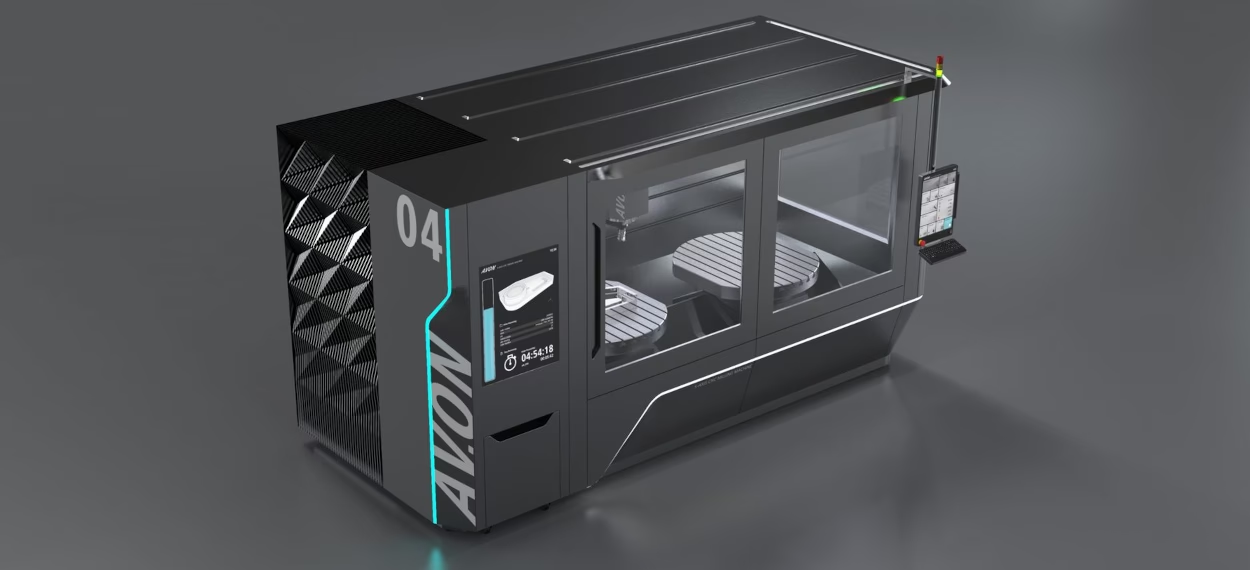
Flexibly Positionable Control Panel
Programming and control of the system occur via an operating module. This can be optimally positioned via a guide rail and swivel axes for the respective work scenario.
The guide rail is based on standard profiles, the swivel axes use commercially available components. Production-optimized design combines these elements into an innovative solution that requires no custom manufacturing.
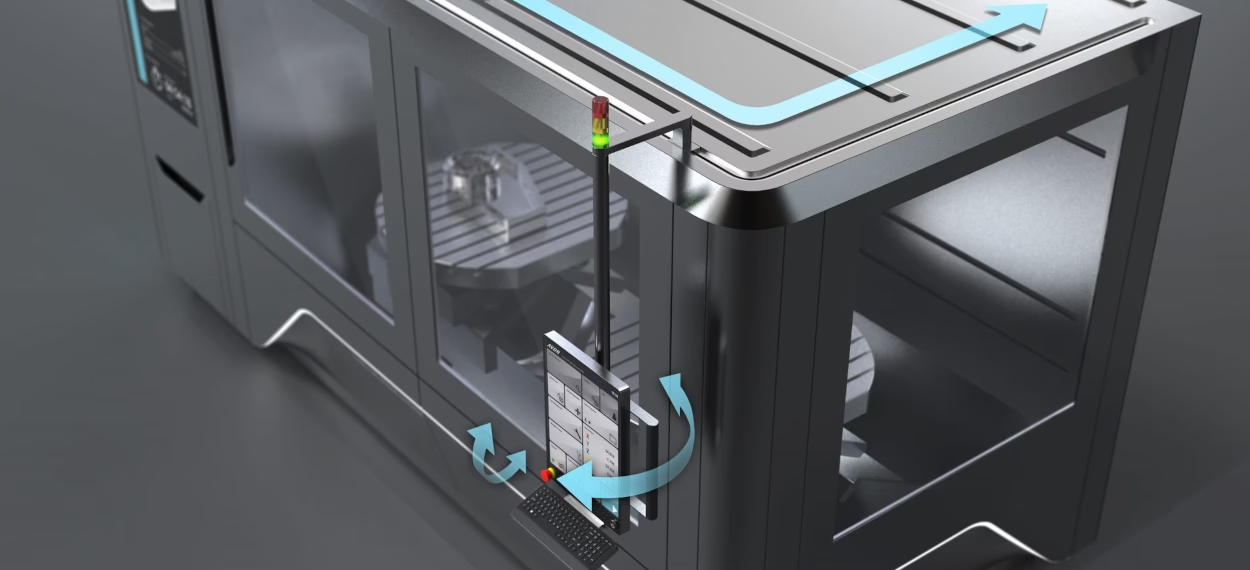
Intuitive User Interface
The control panel interface is designed with a clearly structured layout for intuitive operation. Another display shows processing progress and a digital job sheet.
Even for digital interfaces: Production-optimized design integrates technology so that existing assembly processes can be utilized.

Integrated Tool Cart
Various operations sometimes require changing tools such as milling cutters. A tool cart offers generous storage space for work utensils and finds a form-fitting integrated place in the machining center after use.
The construction uses sheet metal bending technology and welded connections – processes available in existing production. Thus, a functional element becomes an integral part of the overall design.
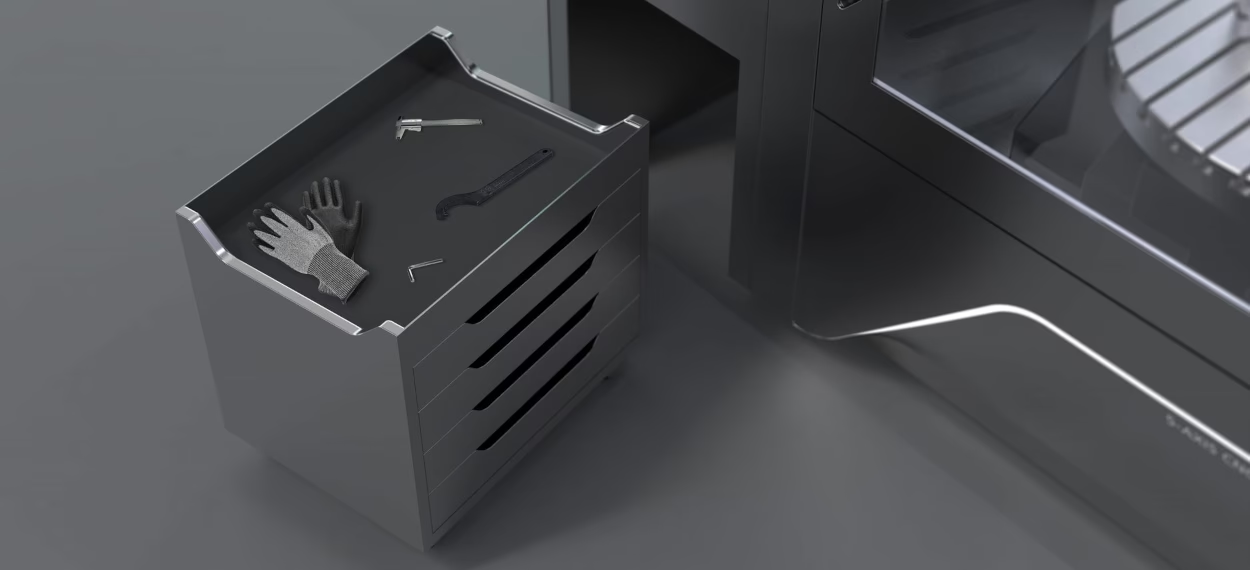
The Success Formula: Production-Optimized Design Creates Differentiation
The AV.ON machining center example demonstrates many aspects and factors showing how significant redesign can be realized without changing manufacturing methods, using only intelligent design adaptations.
Distinctive Products Without Additional Costs
The result is a distinctive product that speaks for itself and delivers the necessary recognition value in competition. Production-optimized design proves: Differentiation and cost efficiency are not mutually exclusive.
The investment is limited to design development itself. Production runs with existing machines, proven processes, and established procedures. The risk is minimal, the added value maximal.
Competitive Advantages Through Intelligent Design
Production-optimized design creates competitive advantages on multiple levels:
Aesthetically, the product convinces through modern, well-thought-out design. Functionally, users benefit from improved ergonomics and user-friendliness. Economically, production costs remain constant or even decrease through optimized processes.
Simultaneously, production-optimized design communicates externally: This company thinks innovatively, works efficiently, and understands its customers' needs.
Production-Optimized Design as Strategic Approach
The examples show: Production-optimized design is not a luxury, but a strategic instrument for companies wanting to differentiate without overhauling their production structure.
Recognizing and Utilizing Existing Potential
The first step is analyzing your manufacturing capabilities. What processes do you master? What machinery is available? What materials do you routinely process? Production-optimized design starts exactly here.
In the second step, we identify untapped potential. Often, manufacturing processes are employed only to a fraction of their possibilities. A bending machine can do more than right angles. A punching system enables complex patterns. A welded seam can be a design element instead of being hidden.
Design Expertise as Key
Production-optimized design requires deep understanding of production technology and design know-how. The challenge lies in connecting these two worlds: engineering knowledge and design competence must work hand in hand.
Our experience from countless projects shows: The most creative solutions emerge at the intersection between construction and design. Production-optimized design thinks both aspects together from the start.
Conclusion: Professional & Production-Optimized Industrial Design Doesn't Have to Be Expensive
Production-optimized design utilizes your existing resources, unlocks untapped potential in your production, and thus creates added value without additional costs.
You gain products that stand out from the competition. You communicate competence and innovation. You improve ergonomics and user experience. And all this without fundamentally changing your manufacturing.
Production-optimized design is the answer to the most common argument against professional design: "Too expensive!" Because it is neither expensive nor elaborate – it is intelligent.
Your Production-Optimized Product Development Starts Here
For years, we have been developing production-optimized designs for companies across various industries. We analyze your production capabilities, identify untapped potential, and develop design solutions that are implementable with your existing means.
If you would like to learn how production-optimized design can enhance your products without increasing your production costs, we are happy to provide free consultation. Let us discover your manufacturing potential together and use it for compelling products.
